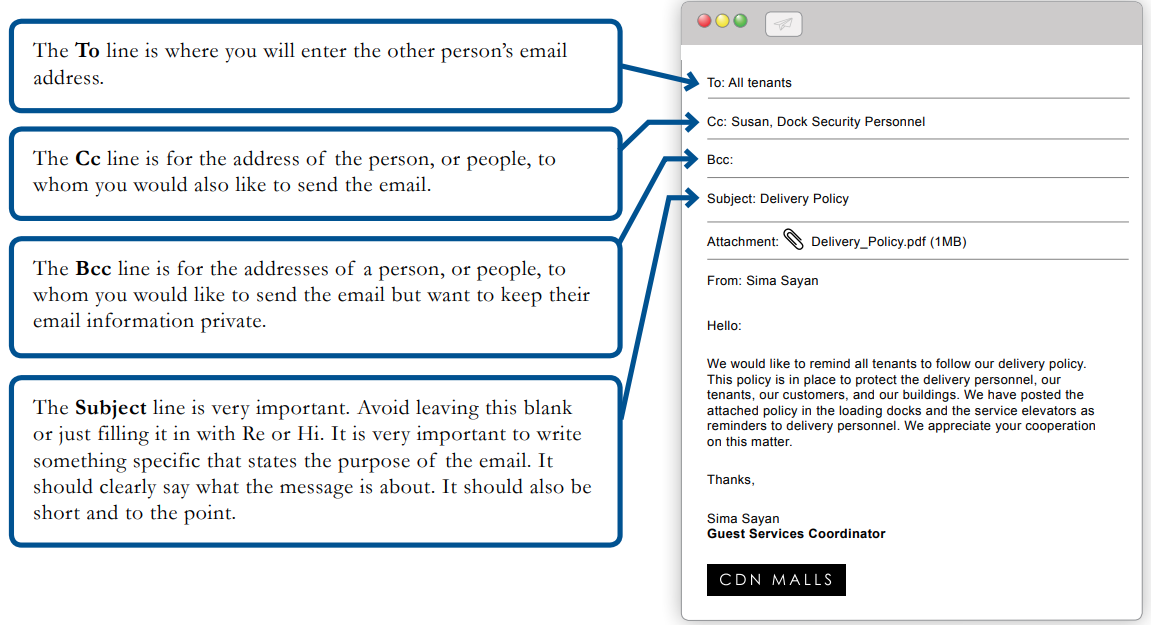Appendix 2: Workplace Mentor Tips
44 Chapter 4: Workplace Mentor Tips
4.1 Workplace Mentor Tip
Points to focus on: Zero-tolerance policy and non-verbal behaviour 
Zero-tolerance policy
Clients and customers are very important to any business, and good customer service is crucial. However, employers are concerned with protecting their employees from bullying or inappropriate behaviour from clients and customers. Such incidents are not usually very common, but they do occur. In order to protect employees, businesses may have a zerotolerance policy for verbal and physical abuse to their employees. If you feel you have not been treated right, you must inform your supervisor. When you have to deal with an upset customer or client, always try to make the situation better by talking calmly and focusing on the problem. If you feel that the client or customer is not calming down, excuse yourself politely by saying that you are going to invite a co-worker into the conversation, and get the help of another employee or supervisor. It is important to stay professional and calm throughout.
Non-verbal behaviour
Non-verbal behaviour is a very important part of communication. Non-verbal behaviour can include many different components. Let us look at a few points that make up non-verbal behaviour:
- Gestures (how you use your hands)
- Eye contact and gaze (the amount of eye contact you make)
- Proxemics (the distance you keep from the other person)
- Posture (how you stand, sit, or carry yourself)
- Voice (includes tone, volume, and rate of speech)
- Facial expressions (how much emotion we show on our faces)
Non-verbal behaviour can vary from one culture to another. Because of this, non-verbal behaviour can cause misunderstandings in communication. In the workplace, it is a good idea to always be aware of your own non-verbal behaviour. It is also a good idea to notice how Canadians interact with each other so that you can become more aware of the cultural differences in non-verbal behaviour. This strategy is useful when you are interacting with people of any culture.
When you are aware that non-verbal behaviour can be different in different cultures, you are also more open to other kinds of non-verbal behaviour and will not be easily offended by non-verbal behaviour that you are not used to.
4.2 Workplace Mentor Tip
Email tips and formal email messages 
Email tips
A very important and common workplace communication is the email. You are most likely already familiar with it. Here are some important tips about email in the workplace:


Formal email messages
When you write an email to a customer or client, the email should be formal. What does this mean? Here are some features of a formal email:
- The message starts with a greeting or salutation such as Dear Mr., Mrs., Ms., or Dr.
- It should not have slang, chat talk, or contractions.
- It has formal vocabulary; for example,
- “I was wondering if we could …”
- “We would be very grateful if …”
- The body of the message is clear and to the point.
- The body of the message has an opening sentence that introduces the reason for the email.
- The body of the message may have more than one paragraph, but only one point should be discussed in each paragraph.
- The information is organized logically.
- The last paragraph thanks the person or calls for some action depending on the subject of the email.
- The message ends with a closing such as Sincerely.
- The email signature of the sender should follow the closing. The email signature usually has the sender’s full name, his or her position at work, and his or her contact information.
- Re-read the message to check spelling, grammar, capitalization, and punctuation.
4.3 Workplace Mentor Tip
Reflection in the workplace 
Reflection is examining your own behaviour and actions in a situation. It can also include examining another person’s behaviour and actions. It is very important to reflect so you can develop and grow. Reflection can help you see your strengths and identify areas for improvement. When you reflect, it is a good idea to first look at strengths, and then look at what needs to be improved. Most companies in Canada appreciate employees who can reflect because it almost always leads to self-development.
Looking at the content of this chapter, the following may be opportunities for reflection for the people involved:
- Susan and Sima, on how they had
- coordinated the signage for the parkade construction
- shared the information about the parkade construction with their customers.
- Sima, on whether she had responded appropriately to the customer’s complaint by email.
- Raja, on whether he had
- done everything he could to make the customer feel like she was being heard and that the complaint was going to be taken care of
- followed CDN Malls’ policy on handling customer complaints.


